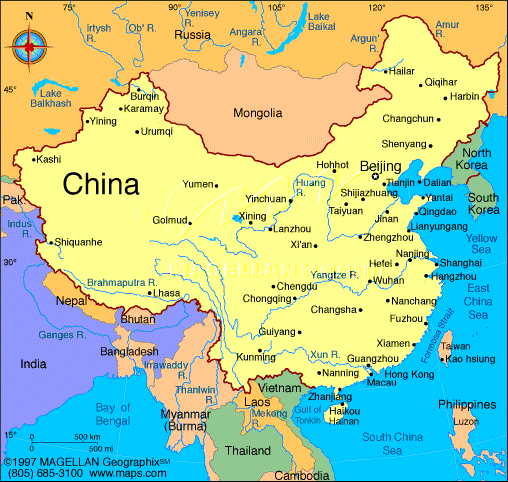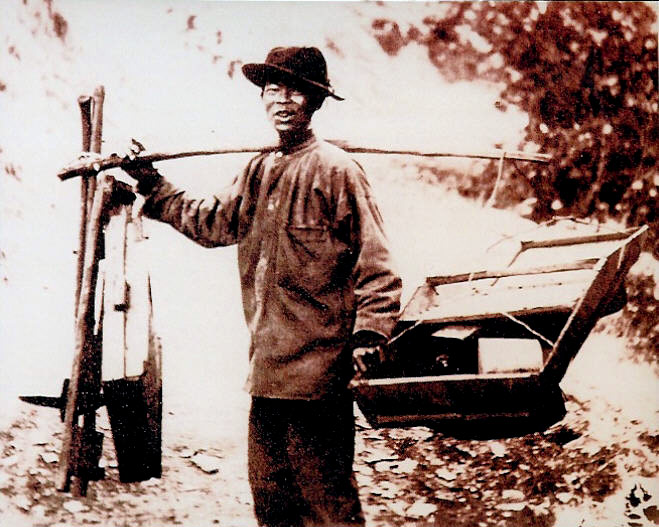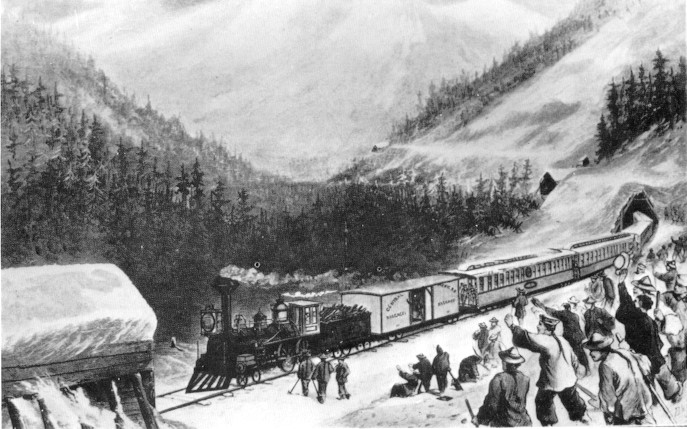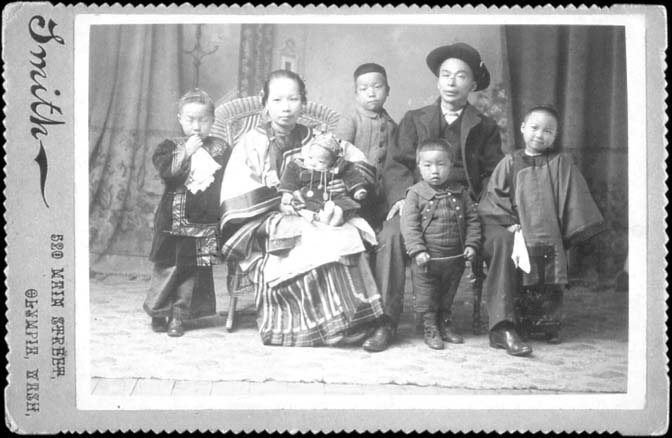Step One
Completion requirements
Please read the background information about Chinese immigration to the United States. You will need this information as you move on to Step Two and the assignment.

The Chinese were the first Asian immigrants to enter the United States. While the first records show that the Chinese began coming to the United States in the 18th century, there have been claims stating that they were in the area now known as America at an even earlier date.
The first Chinese immigrants were wealthy, successful merchants, along with skilled artisans, fishermen, and hotel and restaurant owners. For the first few years they were accepted by the public, government officials, and especially by employers, for they were renowned for their hard work and dependability.
Later, a much larger group of Chinese began arriving in the mid 1800s due to the California Gold Rush. These were mainly unskilled laborers who worked hard for little pay. Still, what they could get paid in America was many times what they could make in China, so it was seemingly worth it.

By the year 1851, there were 25,000 Chinese working in California, mostly around the "Gold Rush" area and around San Francisco. During that time, more than half the Chinese in the U.S. lived in that region. These Chinese clustered into groups, working hard and living frugally (cheaply). As the populations of these groups increased, they formed large cities of ethnic enclaves called "Chinatowns" all over the country, including the first and most important Chinatown in San Francisco.
The way of living among the Chinese was quite different from the patterns displayed among the masses of rowdy American gold-seekers surrounding them. The Chinese did not only mine for gold, but took on jobs such as cooks, peddlers, and storekeepers. In the first decade after the discovery of gold, many had taken jobs nobody else wanted or that were considered too dirty. They soon faced prejudice and discrimination. Miners in the area often used violence to drive the Chinese out of various mines. There also was the belief that the Chinese were taking jobs away from white workers.
During the 1860s, 10,000 Chinese were involved in the building of the western leg of the Central Pacific Railroad which was going to connect the east and west coasts. The pay was excellent, and a thrifty man could save about $20 every month. Despite the nice pay, the work was backbreaking and highly dangerous. Many Chinese lost their lives while building the important Transcontinental Railroad.

As time passed, the resentment against the Chinese increased from those who could not compete with them. Acts of violence against the Chinese continued for decades, mostly from white urban and agricultural workers. In 1862 alone, eighty-eight Chinese were reported murdered. Mob violence steadily increased against the Chinese until even employers were at risk.
Eventually, laws such the Naturalization Act of 1870 and the Chinese Exclusion Act of 1882 restricted immigration of Chinese immigrants into the U.S.
The Naturalization Act of 1870 restricted all immigration into the U.S. to only "white persons and persons of African descent," meaning that all Chinese were placed in a different category, a category that placed them as ineligible for citizenship from that time till 1943. Also, this law was the first significant bar on free immigration in American history, making the Chinese the only culture to be prohibited to freely migrate to the United States for a time.
The Chinese Exclusion Act of 1882 excluded Chinese "skilled and unskilled laborers and Chinese employed in mining" from entering the country for ten years under penalty of imprisonment and deportation. This banned Chinese people from coming to the United States. Because of this, wives of men already in the United States were not able to come, and any Chinese person who left the United States had to obtain certifications for reentry, making it very difficult for a Chinese person to visit China and then be able to return.

Despite these difficulties, the Chinese became an important part of American society. Years later, once some of the restrictions were lifted, more Chinese were able to come to the United States and contribute to our culture and economy.

The Chinese were the first Asian immigrants to enter the United States. While the first records show that the Chinese began coming to the United States in the 18th century, there have been claims stating that they were in the area now known as America at an even earlier date.
The first Chinese immigrants were wealthy, successful merchants, along with skilled artisans, fishermen, and hotel and restaurant owners. For the first few years they were accepted by the public, government officials, and especially by employers, for they were renowned for their hard work and dependability.
Later, a much larger group of Chinese began arriving in the mid 1800s due to the California Gold Rush. These were mainly unskilled laborers who worked hard for little pay. Still, what they could get paid in America was many times what they could make in China, so it was seemingly worth it.

By the year 1851, there were 25,000 Chinese working in California, mostly around the "Gold Rush" area and around San Francisco. During that time, more than half the Chinese in the U.S. lived in that region. These Chinese clustered into groups, working hard and living frugally (cheaply). As the populations of these groups increased, they formed large cities of ethnic enclaves called "Chinatowns" all over the country, including the first and most important Chinatown in San Francisco.
The way of living among the Chinese was quite different from the patterns displayed among the masses of rowdy American gold-seekers surrounding them. The Chinese did not only mine for gold, but took on jobs such as cooks, peddlers, and storekeepers. In the first decade after the discovery of gold, many had taken jobs nobody else wanted or that were considered too dirty. They soon faced prejudice and discrimination. Miners in the area often used violence to drive the Chinese out of various mines. There also was the belief that the Chinese were taking jobs away from white workers.
During the 1860s, 10,000 Chinese were involved in the building of the western leg of the Central Pacific Railroad which was going to connect the east and west coasts. The pay was excellent, and a thrifty man could save about $20 every month. Despite the nice pay, the work was backbreaking and highly dangerous. Many Chinese lost their lives while building the important Transcontinental Railroad.

As time passed, the resentment against the Chinese increased from those who could not compete with them. Acts of violence against the Chinese continued for decades, mostly from white urban and agricultural workers. In 1862 alone, eighty-eight Chinese were reported murdered. Mob violence steadily increased against the Chinese until even employers were at risk.
Eventually, laws such the Naturalization Act of 1870 and the Chinese Exclusion Act of 1882 restricted immigration of Chinese immigrants into the U.S.
The Naturalization Act of 1870 restricted all immigration into the U.S. to only "white persons and persons of African descent," meaning that all Chinese were placed in a different category, a category that placed them as ineligible for citizenship from that time till 1943. Also, this law was the first significant bar on free immigration in American history, making the Chinese the only culture to be prohibited to freely migrate to the United States for a time.
The Chinese Exclusion Act of 1882 excluded Chinese "skilled and unskilled laborers and Chinese employed in mining" from entering the country for ten years under penalty of imprisonment and deportation. This banned Chinese people from coming to the United States. Because of this, wives of men already in the United States were not able to come, and any Chinese person who left the United States had to obtain certifications for reentry, making it very difficult for a Chinese person to visit China and then be able to return.

Despite these difficulties, the Chinese became an important part of American society. Years later, once some of the restrictions were lifted, more Chinese were able to come to the United States and contribute to our culture and economy.
Last modified: Monday, July 30, 2012, 7:51 PM